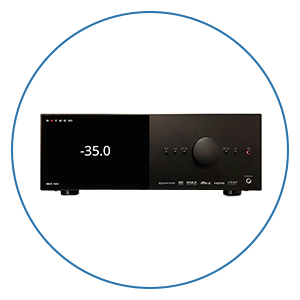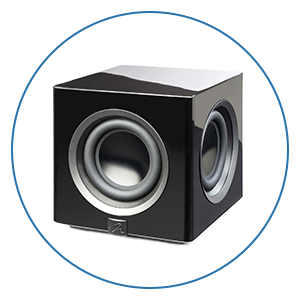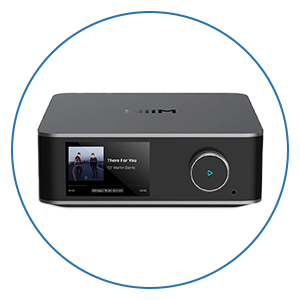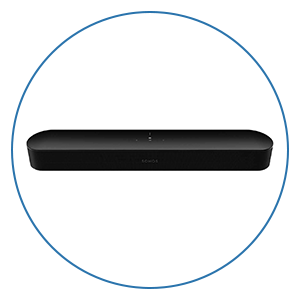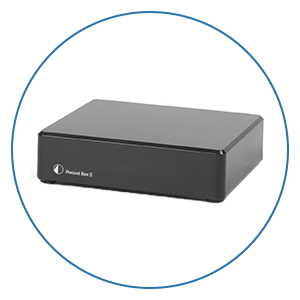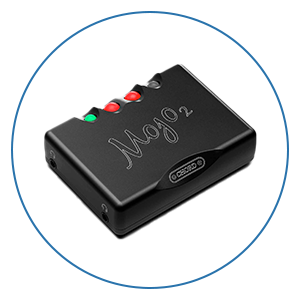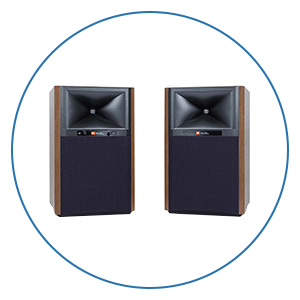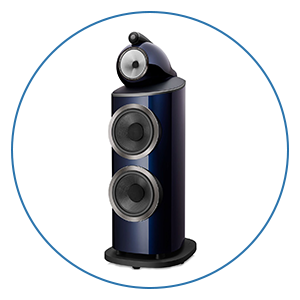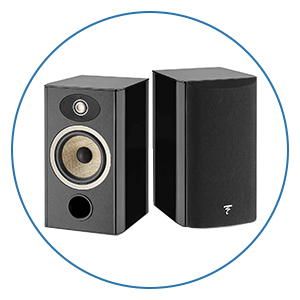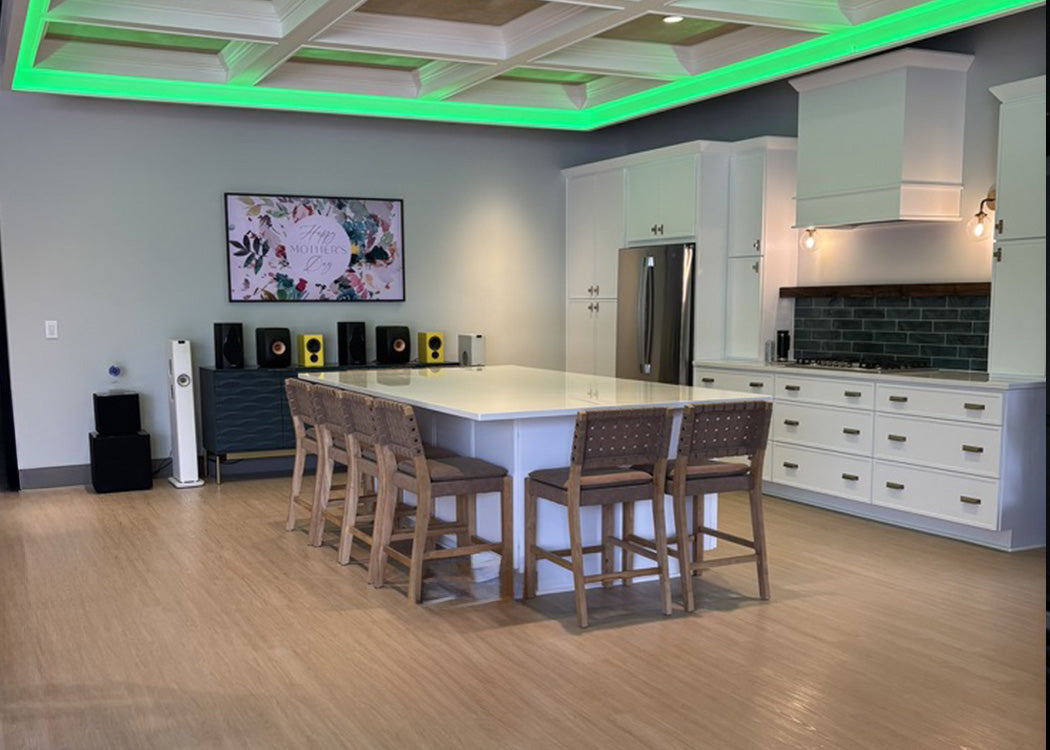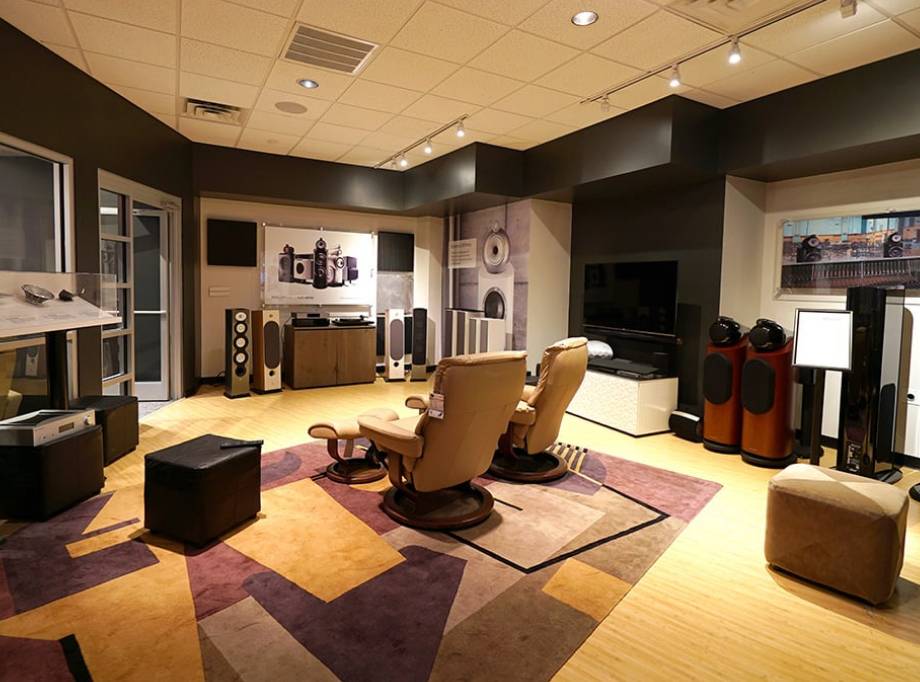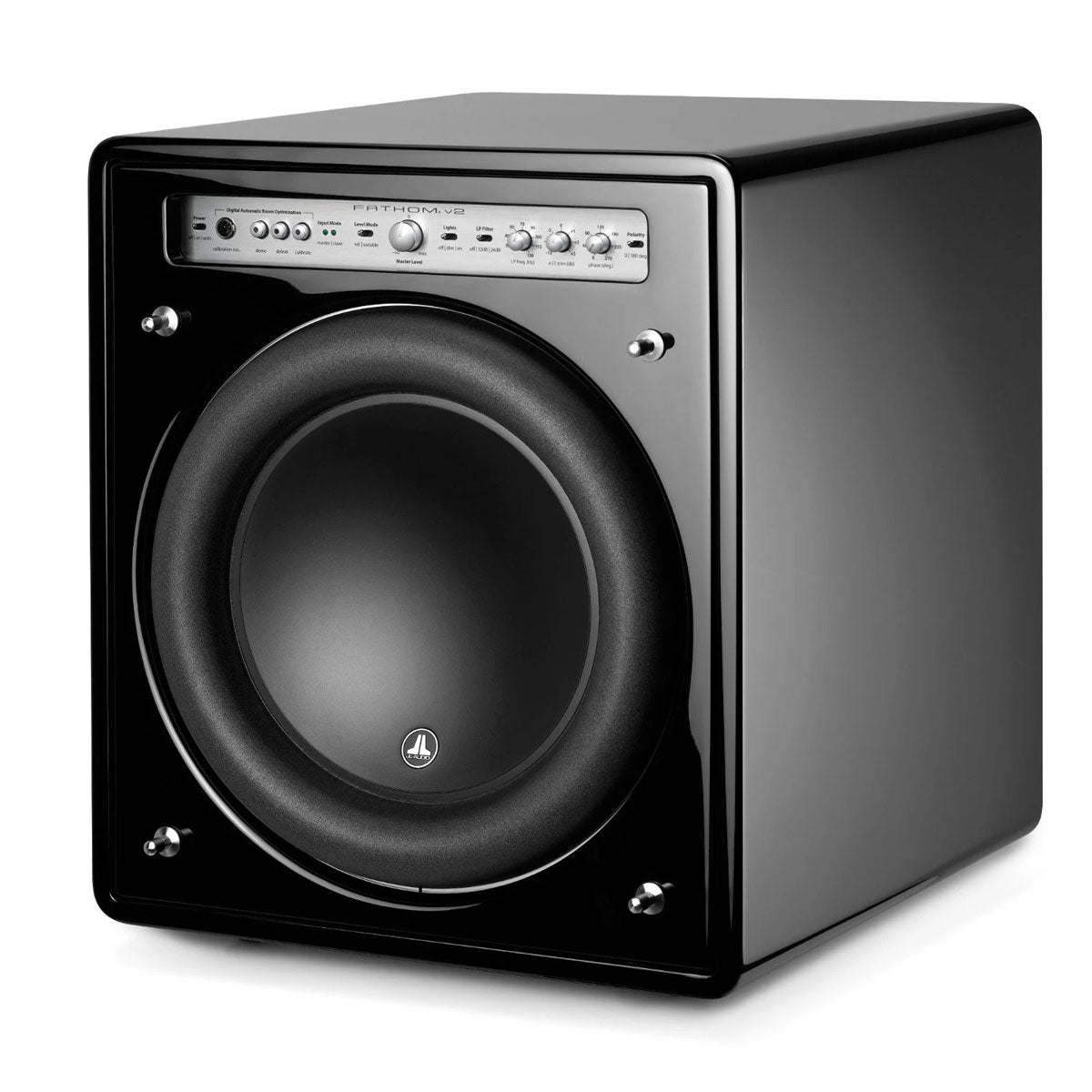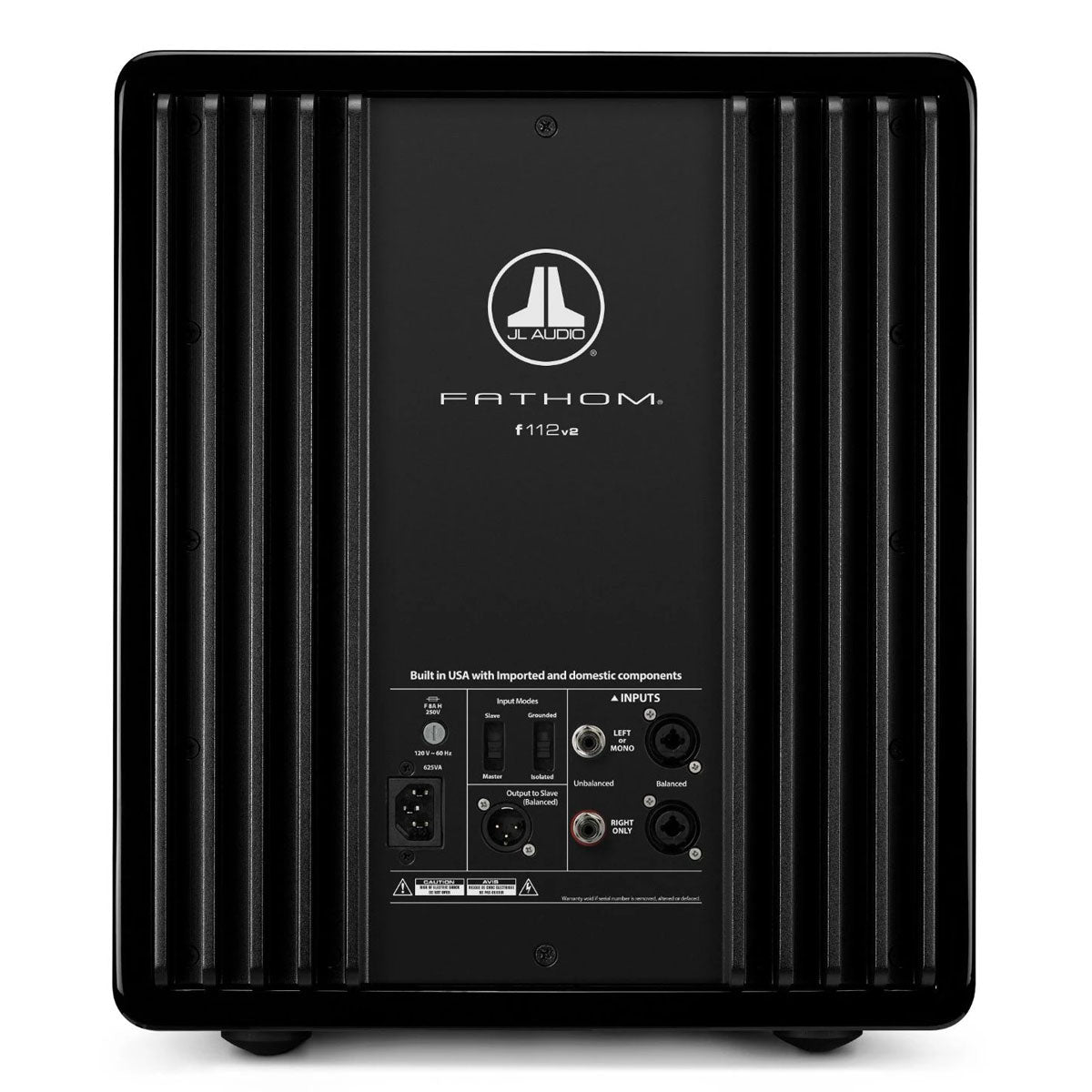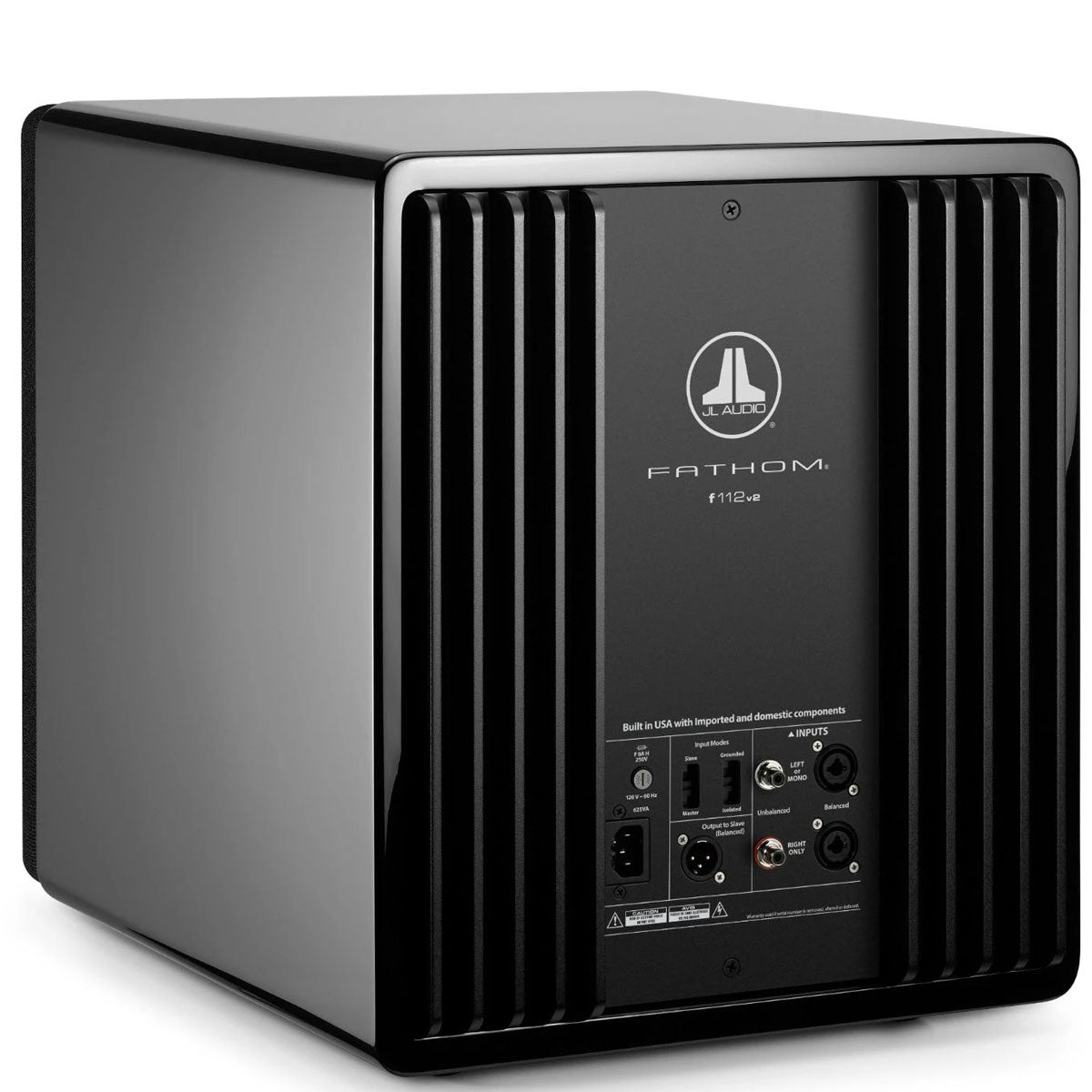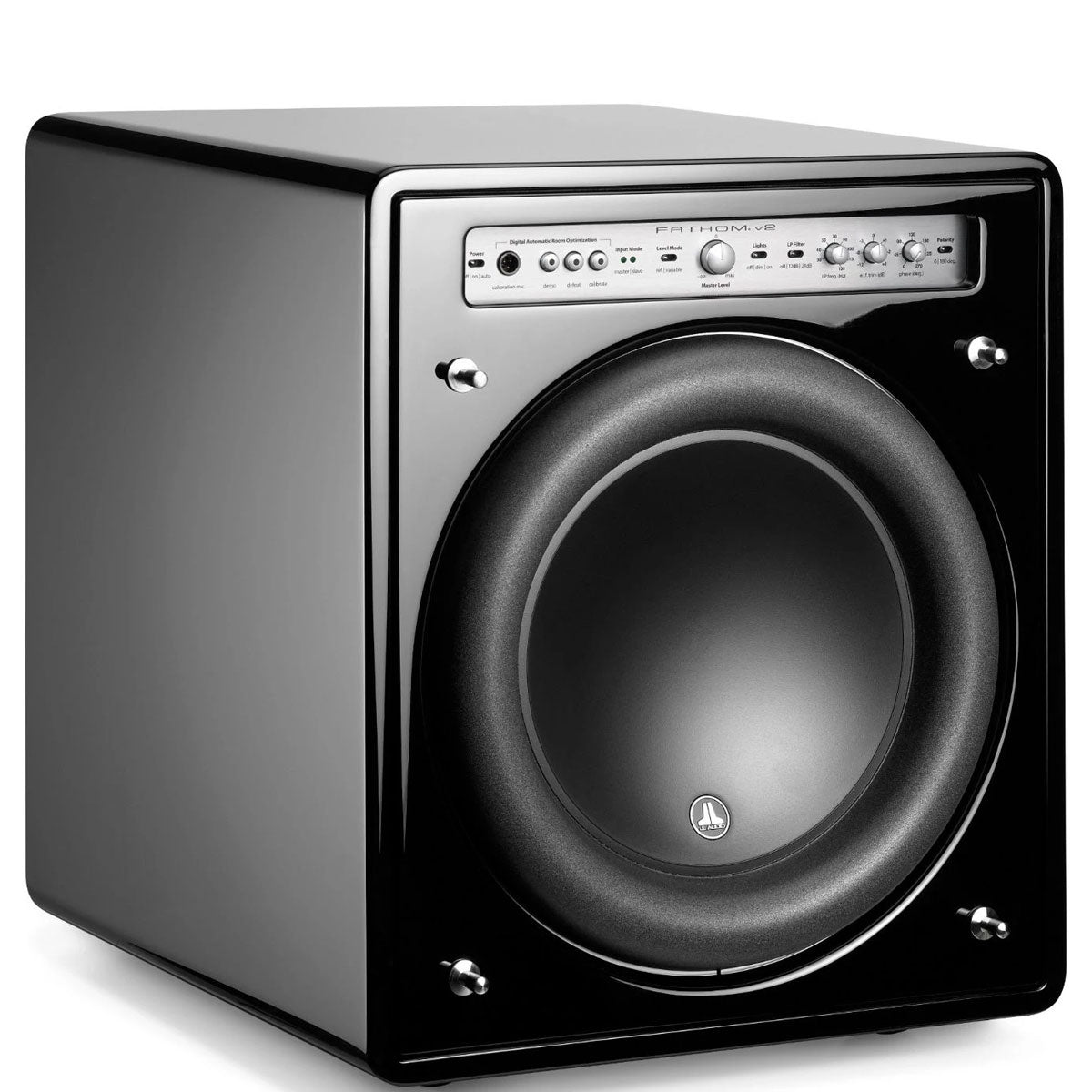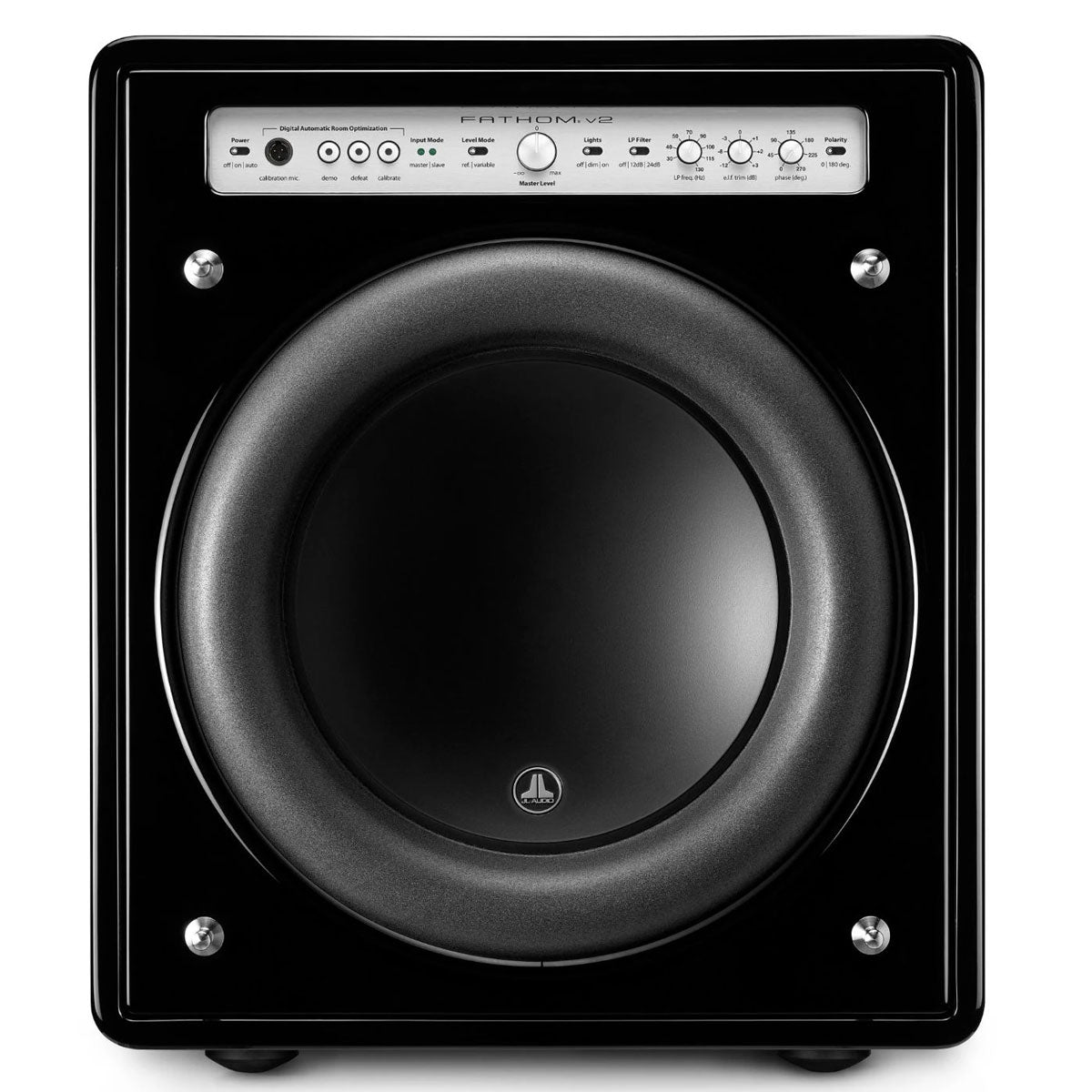JL Audio f113v2-GLOSS
JL Audio f113v2-GLOSS
Free Shipping On All Orders, No Minimums.
We offer free 2-day shipping on most products within the continental US.
Weekdays - Orders placed by 2pm EST ship same day. Orders placed after 2pm EST will ship the following business day.
Weekends - Orders placed on Saturday and Sunday will ship Monday.
Orders requiring motor freight delivery may take more than two business days. Once your order has shipped, you'll receive a shipping confirmation email with a tracking number for easy tracking.
Orders that contain items that are currently backordered, special order, or out of stock will ship complete once all items are in-stock unless otherwise requested.
If you need it faster, you will have the option of choosing a quicker shipping option when you checkout on the website.
At this time, we do not ship internationally and orders to Hawaii and Alaska may incur an additional shipping charge. Please contact us at 888.899.8776 or email support@audioadvice.com to confirm.
Rerouting and Address Changes
We cannot make ANY address changes once an order is placed. If you are unable to accept delivery of your package as ordered, we will need to cancel your order, return the package to sender and have you replace your order through our website.
Keep the Box
We suggest you keep the shipping box or boxes for at least 30 days. It is actually a great idea to keep boxes for audio products for the life of the product. Having the box and all packing will increase the trade-in value should you decide to move up and they are handy to have should you ever need to send the unit in for repair.
How To Receive a Motor Freight Order
The trucking company will contact you to schedule a convenient time to deliver the order. Please note that you must be present for delivery.
Visually inspect the box to make sure you see no signs of damage. If you notice any damage at all, take some pictures with your phone and make a note of them on the delivery receipt the driver will ask you to sign. If it is obvious that the product is damaged, please refuse the order and contact us immediately at 888.899.8776 or email support@audioadvice.com.
Open your box as soon as possible and inspect the product for damage and contact us if you find anything wrong.
FedEx Freight Service Comparison
| Feature / Service | Scheduled Curbside Delivery | White Glove Delivery |
|---|---|---|
| Scheduled delivery appointment | ✔ | ✔ |
| Delivery location | Ground level only (garage, front door, loading dock) | Room of choice, any floor |
| Delivery team | 1 person | 2 people |
| Placement inside home/business | ✘ | ✔ |
| Upstairs / downstairs delivery | ✘ | ✔ |
| Unpacking | ✘ | ✔ (upon request) |
| Packaging removal | ✘ | ✔ (upon request) |
| Assembly / installation | ✘ | ✘ |
| Old item removal | ✘ | ✘ |
At Audio Advice, we pride ourselves on customer satisfaction. We'll bend over backward to make sure you're 100% satisfied and we won't accept anything less. We offer 30-day hassle-free returns and personalized service from real, live people.
If an item doesn't meet your expectations, you may return or exchange it in its original condition and packaging within 30 days for a full refund, minus shipping fees. Items shipped back in like new condition through standard shipping carriers will only incur a flat fee of $15 to return. If the items were initially shipped through free scheduled delivery via motor freight (commonly referred to as LTL), returning them will result in return shipping fees starting at $150. These items include but are not limited to, oversized items such as TVs, certain subwoofers, floorstanding speakers, furniture, and most items weighing over 75 pounds. Return fees will also apply for exchanges. We want to treat your system as if it is our own and want you to be completely satisfied with your purchase.
Please see the instructions below. We only accept returns for any product purchased directly from our website. If merchandise is not returned in its original condition or is missing packaging, manuals, accessories or other parts, or the resale value of the product has been impaired, a partial refund will be given and calculated on a case-by-case basis.
Non-Returnable Items
The following items cannot be returned or cancelled:
- Special/Custom Order Items
- Open Box Products
- Gift Cards
- In-ear headphones cannot be returned once the packaging has been opened due to personal hygiene reasons. Please contact our customer care team if you'd like help choosing.
-
Turntables With a Broken Stylus: All turntables ship out with the stylus intact. If you return a turntable or phono cartridge with a broken or missing stylus you will be subject to a return fee. Please be careful when setting up your turntable and contact us with any questions.
Is It Easy To Return An Item?
Yes, simply give us a call at 888.899.8776 or you can email our support team at support@audioadvice.com. Many times our team of experts can help figure out why the product might not be working like you expected and get things fixed over the phone, so don’t be surprised if we ask a few questions, we love troubleshooting!
If our tech help can not make you happy, we will email over a return shipping label with a Return Number.
Hopefully, you saved all of the original item’s box and packaging inserts. You will want to pack back up your return or exchange in the same way it came out of the original box. Once you have everything packaged correctly, tape the box on the top and bottom to assure it stays together. If Audio Advice shipped the item to you inside a second box, it's a good idea to use that same extra box to help prevent damage on its way back to us. To avoid it accidentally coming back to you, use a magic marker to cross out the old shipping label or just tear it off.
The return shipping label we send you will have our address on it, just make sure you take the box to the right shipper (UPS, FEDEX, or USPS) as per the label.
If you are close to one of our stores, please let us know if it is more convenient for you to return it to us directly. You will still need to get a return number by contacting us and shipping and/or restocking charges may apply.
When Will I See My Refund?
It usually takes around 7-14 days for the refund to show up on the payment method you used. We do inspect all returns for damage and accuracy of the item inside the box before issuing a refund. Some items may be subject to shipping and restocking fees.
Can I Exchange My Purchase For Something Different?
Sometimes those big speakers just don’t fit in the room or you might have bought a small subwoofer and later found out you’d love a bigger one. If you would like to make an exchange within 30 days of receiving your item, just give us a call at 888.899.8776 or email support@audioadvice.com and we will help work out the details. Additional shipping charges and return costs may apply.
How Do I Cancel An Order?
If the item has already shipped out or is a special order item, it is not possible to cancel the order. Please contact us at 888.899.8776 or email support@audioadvice.com to start the return process.
What If I Find Shipping Damage?
We need to know right away about any shipping damage. Please contact us at 888.899.8776 or email support@audioadvice.com within 48 hours of your delivery so we can get the ball rolling on making things right. It’s very helpful to take some pictures and email them to us if possible.
Can I Refuse A Shipment?
You can, but unless the item is damaged, shipping and restocking fees will be deducted from your refund. If your item arrives damaged and you are lucky enough to be there, snap some quick pics and refuse the order. Then contact us so we can get a replacement on the way.
What Happens If My Order Is Defective?
This is actually pretty rare, most consumer electronics work fine out of the box 99.9% of the time. We’d like for you to contact us first by calling 888.899.8776 or email support@audioadvice.com so we can help get to the bottom of things. If your item is indeed defective during the first 30 days, we can usually exchange it for a new, replacement unit.
What About Service After 30 Days?
Audio Advice has a great relationship with all of our brands and can help you with warranty service by the brand after our 30-day guarantee period. Even after the warranty expires, we can arrange for service by the brand on products purchased from Audio Advice. Just call 888.899.8776 or email support@audioadvice.com.
How Do You Determine A Restocking Fee?
You may not believe it, but sometimes we receive items back that were put in the box with zero packaging and are completely destroyed or are missing many of the pieces that came with the item. We also track serial numbers and will get back different serial numbers. We’ve even seen different items than what we shipped out be returned. However, it’s very important to package your return properly so that nothing goes missing or gets damaged in shipping, which will result in a restocking fee or even no refund at all. If a product is opened and the market value of the product is reduced, then a restocking fee may be applied to the cost of restocking and the reduced market value of the product. The bottom line is if you treat us fairly, we will do the same.
Audio Advice strives to provide industry-leading support and service while also maintaining the lowest prices available on products for our customers. We work hard with our vendors to bring our customers the best products at each price point. As a part of that process, we work with our vendors to provide the lowest pricing in our stores and on our website.
Our prices should always be the same as any other authorized dealer, including big-box retailers and major online retailers.
If you believe that you have found a lower advertised price from a legitimate authorized seller, call us and let us know so we can make sure we can correct any inadvertent error on our side. As a matter of policy, we update our prices automatically if a vendor changes its authorized pricing policies, so we generally have the best prices all the time. Increasingly, there are knock-off copies of products online, usually sold by non-authorized dealers.
Please be sure that the item meets the following conditions:
- The item is brand new, in stock, and available for purchase
- The item has the identical model number, color, etc as the item on our site.
- The seller is an authorized dealer
As always, our goal is to provide a terrific customer experience, including industry low prices. We appreciate your support.
Overview
Powered Subwoofer with 13.5-inch Subwoofer, 3000 watts
The Fathom f113v2 is a heavyweight subwoofer capable of filling the most demanding rooms with powerful low-frequency output and reference-class sound quality. The combination of an ultra-long throw W7 13.5-inch driver and a very powerful switching amplifier give it the kind of output normally associated with far larger subwoofer systems.
Product overview
Low distortion, excellent dynamic capabilities and shockingly deep bass extension will allow you to experience all the excitement of the most demanding cinematic material, while also being able to reproduce all the nuance and texture of your most delicate musical material.
A complete set of signal processing features is easily accessible on the front surface of every Fathom. These include a highly flexible low-pass filter, variable phase, switchable polarity, e.l.f. trim and our powerful Digital Automatic Room Optimization (D.A.R.O.) system. A calibrated microphone is included for the D.A.R.O. system. Input connections are made via unbalanced RCA connections or balanced Neutrik® combo XLR/TRS jacks. Also included is an XLR output to connect a second Fathom® as a slave unit.
Technology
Digital Automatic Room Optimization (D.A.R.O.)
Summary:
JL Audio's exclusive D.A.R.O. technology uses a powerful on-board DSP to automatically optimize the subwoofer's in-room frequency response. This leads to a superb listening experience, no matter where the subwoofer is placed.
Detailed Information:
In typical listening spaces, subwoofer and listener placement have a profound effect on the accuracy of low-frequency reproduction. In the real world, subwoofer placement almost always involves a compromise between sonic performance, practicality and aesthetics.
To face this dilemma head on, JL Audio subwoofer systems incorporate a clever piece of technology called Digital Automatic Room Optimization (D.A.R.O.). The D.A.R.O. system self-generates a series of calibration tones, measures the frequency response at the listening position, and automatically configures an 18-band, 1/6 octave equalizer for a flat end-result. The system effectively allows for smooth, well-balanced sub-bass from a variety of locations that would have been less than ideal without D.A.R.O.
To perform this audio magic, all you have to do is:
1. Connect the included calibration microphone to the front panel of the subwoofer.
2. Press the calibrate button on the front panel of the subwoofer.
3. Hold the microphone at the primary listening position for about a minute.
4. A few minutes later, you have completed this one-time setup routine.
You won't need a computer, spreadsheets or complex measurement equipment, and you won't need to navigate and manipulate complicated interfaces… D.A.R.O. is a fine example of technology in the service of man, if there ever was one.
Dynamic Motor Analysis - DMA Optimized Motor
Summary:
JL Audio's proprietary Dynamic Motor Analysis system is a powerful suite of FEA-based modeling systems, first developed by JL Audio in 1997 and refined over the years to scientifically address the issue of speaker motor linearity. This leads to vastly reduced distortion and faithfully reproduced transients... or put simply: tight, clean, articulate bass.
Detailed Information:
DMA is a Finite Element Analysis (FEA)-based system, meaning that it takes a large, complex problem, breaks it down into small solution elements for analysis and then assembles the data to form an accurate, "big-picture" solution. DMA's breakthrough is that it actually considers the effects of power through the coil as well as coil/cone position within the framework of a time-domain analysis. Because DMA does not rely on a steady-state model, it is able to consider shifts in the circuit elements being analyzed. These modeling routines are intense, requiring hours to run for a whole speaker.
DMA is able to analyze the real effects of fluctuating power and excursion upon the magnetic circuit of the motor, specifically the dynamic variations of the "fixed" magnetic field. This delivers intensely valuable information compared to traditional modeling, which assumes that the "fixed" field produced in the air gap by the magnet and the motor plates is unchanging.
1. Linear motor force over the speaker's operational excursion range
2. Consistent motor force with both positive and negative current through the coil
3. Consistent motor force at varying applied power levels
The payoff is reduced distortion, improved transient performance and stellar sound quality.
W-Cone (U.S. Patent #6,496,590)
Summary:
The W-Cone is a unit-body cone assembly that delivers astonishing cone stiffness with minimal mass. The shape also provides superb torsional rigidity, which is critical to maintaining voice coil alignment at the suspension limits.
Detailed Information:
The more excursion and motor force a speaker has, the more important cone rigidity becomes. The acceleration forces are extreme, requiring the cone to withstand rapid changes in speed and direction without deformation. Deformation not only leads to distortion, but can also affect the speaker's mechanical integrity by allowing the voice coil to go out of alignment and rub on the top-plate and the pole-piece of the motor.
There are several approaches to enhancing cone rigidity. The obvious ones are using a thicker material and/or a stiffer material. In recent years, several manufacturers have used composite cone materials (Kevlar®, fiberglass, etc.) or metals (aluminum, magnesium, titanium alloys). The use of these exotic materials is typically accompanied by marketing claims that the material chosen has exceptional stiffness-to-mass characteristics. These are true statements, but can be misleading. While these materials have excellent stiffness-to-mass properties (compared to paper or poly), they are not lighter than paper or poly in practice. This means that their use accepts the compromise of added moving mass on the design. This leads to efficiency penalties and suspension complications (it's harder to keep a heavy mass aligned properly).
A simple poly cone diaphragm, while sufficient for lower power designs, would not remain rigid under the demands that the W7 design requires. This ultimately led to the design we call the W-Cone. The W-Cone assembly achieves its rigidity through architectural means, rather than through inherently stiff materials. The design addresses the stiffness issue by using two lightweight mineral-filled polypropylene skins, bonded together at the perimeter and the center of the assembly. The lower skin's cross-section is shaped like a 'W', hence the name, and provides incredible rigidity when bonded to the dished upper skin. The effect is not unlike the trusses of a bridge or the unit-body construction of a modern automobile. In addition to the overall rigidity benefit, the lower skin's shape distributes the force generated by the coil and motor more evenly than a typical diaphragm. The force is not only applied to the apex but also distributed to the perimeter of the outer diaphragm for more linear behavior. A further benefit of the W-Cone is that the upper skin (the one in contact with the listening environment), is isolated from the high air-pressure gradients of the enclosure, further reducing deformation (and distortion).
As a point of comparison, the W-Cone assembly of a 12W7 is 32% lighter than a typical aluminum-alloy 12-inch cone. If analyzed in terms of weight per square inch of piston area, the W7 cone-body weighs 1.24g/sq.in., compared to 1.45g/sq.in. for an aluminum-alloy cone and 1.66g/sq.in. for a titanium-alloy cone.
Elevated Frame Cooling (U.S. Patent #6,219,431 & #6,229,902)
Summary:
JL Audio's patented Elevated Frame Cooling design delivers cool air through slots directly above the top-plate to the voice coil of the speaker. This not only enhances power handling, but also sound quality by minimizing dynamic parameter shifts and power compression.
Detailed Information:
Many speakers employ venting techniques to enhance voice coil cooling. This is typically accomplished by having big holes in the sides of the frame just below the spider attachment shelf. While it provides a modest cooling benefit, this low-velocity air-flow does not blow directly or strongly on the voice coil.
By elevating the frame above the top-plate of the motor (via stand-offs integrated into the bottom of the frame) a narrow, high-velocity air-path is created between the bottom surface of the frame and the top surface of the top-plate. This air path leads directly to the voice coil and then turns upward into the spider air cavity. By utilizing the pumping action of the spider through this focused air path, a large volume of cool air hits the coil windings directly.
Another important benefit is that the upper surface of the top-plate (one of the speaker's hottest parts) is directly exposed to cooling air flow, whereas on a conventional design it is isolated from the air flow by the lower flange of the frame. The elevated frame technology greatly increases thermal power handling, reduces compression effects and does so without any additional parts.
Floating Cone Attach Method - FCAM™ (U.S. Patent #6,501,844)
Summary:
This assembly technique, conceived by JL Audio, ensures proper surround geometry in the assembled speaker for better excursion control and dynamic voice coil alignment.
Detailed Information:
JL Audio's patented FCAM™ technology is an innovative method of bonding the surround/cone assembly to the voice coil former/spider assembly. This feature helps ensure concentricity of the surround, spider and voice coil without torquing the suspension to achieve it. This allows for the inevitable, slight variations in production part dimensions without having them negatively impact the integrity of the suspension and coil-centering at high excursions.
OverRoll™ Surround
Summary:
By utilizing space wasted in conventional speakers, this ground-breaking innovation controls the W7's massive excursion without sacrificing precious cone area.
Detailed Information:
One of the first things you notice about a W7 is that something is "missing"... the mounting flange. Of course, this is actually not the case. The mounting flange is simply hidden beneath the surround and is made accessible for mounting purposes by detaching the outer edge of the surround and moving the roll to the inside (a pretty neat little trick). Apart from the obvious benefits of amazing your friends as you pull the surround off your speaker, there is a serious technical issue that led JL Audio in this design direction: Effective Piston Area ("Sd"). This is essentially the speaker's "cylinder bore", to use an automotive engine analogy, and is calculated by measuring the diameter of the diaphragm including one-half of the surround roll-width. In other words, from the top-center of the surround on one side to top-center of the surround on the other side.
The displacement capability of a speaker is determined by this piston area times the speaker's excursion capability. Displacement of air is directly linked to output potential. Therefore, the more air a speaker can ultimately displace, the louder it can play. That being said, there is a big difference between piston area and excursion: piston area doesn't need power to make it happen. This means that by making a larger piston, you are directly improving displacement for a given amount of excursion and, therefore, making your speaker more efficient. This is not the only factor that governs efficiency, but it is a major one.
To make a speaker have more excursion capability not only requires a motor design that can deliver more stroke, but also requires a surround rugged enough to handle the demands of longer excursions and controlled enough to keep everything lined up properly. If the surround's roll-width is not adequately large, its behavior (compliance) is not linear over the useful stroke of the woofer and it is more likely to fatigue and fail. For this reason, speakers with longer excursion capability generally need larger surround rolls.
The problem with big surrounds is that they begin to encroach on the effective piston area of the driver. For example, a typical 12-inch woofer with a medium-sized roll has an effective piston area of 81.52 square inches. Compare this to a fat-surround 12-inch woofer which has a piston area of 69.07 square inches (15.2 % less effective piston area than the medium-size roll.) To overcome this loss, the fat-surround woofer has to produce more excursion to displace the same air as the woofer with the medium surround (and will require more power to do so).
The technology also provides a geometry advantage on the outside edge of the surround roll, allowing for more linear operation. A further benefit is that the mounting holes are inherently sealed by the surround, resulting in an improved box seal.
Radially Cross-Drilled Pole-Piece (U.S. Patent #6,243,479)
Summary:
This innovative venting system greatly enhances thermal dissipation and power handling by directing air flow onto the voice coil former, working in conjunction with the Elevated Frame cooling technology to effectively remove heat from the voice coil. This improves power handling and reduces power compression effects, leading to more linear performance.
Detailed Information:
This technology differs from a conventionally vented pole-piece in that the air flow is capped off at the top of the pole-piece and directed through machined holes on the outer wall of the pole-piece to the region directly behind the voice coil. The top portion of the pole-piece is smaller in outside diameter where the holes vent and helps create a high-volume, high-velocity airflow path between the inner-coil cavity and the ambient air of the enclosure.This helps remove super-heated air that is trapped between the coil former and pole-piece on a conventional design, leading to a dramatic improvement in cooling efficiency, especially at high excursions.
Engineered Lead-Wire System (U.S. Patent #7,356,157)
Summary:
Carefully engineered lead-wire design and attachments ensure controlled, quiet lead-wire behavior under the most extreme excursion demands.
Detailed Information:
Managing the lead-wires on a long-excursion woofer is one of the trickier aspects of its mechanical design. To address this, many long-excursion woofers today rely on a simple solution that weaves the lead-wires into the spider (rear suspension) of the driver.
The biggest problem with this approach is that spider limiting behavior plays a hugely important role a woofer's performance. Lead-wires that are attached or woven into the spider material can alter the spider's "stretching" behavior. The tinsel wire naturally has less 'give' than the fabric material of the spider leading to asymmetrical spider behavior and non-uniform stress distribution around the spider circumference. The wire attachment points can also cause localized pulling and tearing forces at the spider's excursion limits. As such, longevity becomes a major concern and makes the woven-in design less than ideal for very long-excursion designs.
While a traditional 'flying lead' design does not compromise spider linearity or radial stability, it creates its own challenges on a long-excursion woofer. Managing the 'whipping' behavior of the wire and making sure it does not contact the cone or spider is one challenge. Another is ensuring that the leads do not short one another or the frame of the woofer.
To overcome these issues, JL Audio's engineered flying lead-wires work in conjunction with carefully engineered entry and exit support structures molded into the terminals and the voice coil collar. Some models also feature jacketed lead-wires to further reduce the likelihood of shorting and fatigue. The result is flawless high-excursion lead-wire behavior, with outstanding reliability and none of the compromises inherent to a woven-in lead wire system. Building woofers this way requires much more labor and parts complexity than the simpler woven-in approach, but the payoff is in reduced distortion, reduced mechanical noise and improved reliability.
High-Damping Feedback Circuitry (U.S. Patent #6,441,685)
Summary:
This proprietary, discrete control circuit design allows our Class D switching amplifiers to maintain an excellent damping factor for improved transient behavior and fidelity.
Detailed Information:
While Class D amplifiers are well known for outstanding efficiency, they have also been known for less than spectacular sound quality due to weak damping of the driven load and poor power regulation. These factors are critical to subwoofer fidelity as they relate directly to the amplifier's ability to control the motion of the speakers.
JL Audio's Patented Class D output circuit utilizes a discrete control section and a unique feedback loop design that results in outstanding power regulation with a damping factor that's vastly higher than other Class D designs and also higher than most Class A/B amplifiers. The benefit of this exclusive JL Audio technology is tight, clean bass reproduction with the efficiency advantage of Class D.
It is a package tailor-made for world-class bass performance.
Built in U.S.A. with Global Components
Summary:
JL Audio's Miramar, Florida loudspeaker production facility is one of the most advanced in the world.
Details & Specs
Unbalanced Inputs: Stereo or Mono (two RCA jacks)
Enclosure Type: Sealed
Balanced Inputs: Stereo or Mono (two female XLR jacks)
Driver: Single 13.5-inch (nominal diameter)
Output To Slave: Balanced (one male XLR jack)
Frequency Response: (anechoic)
20 – 86 Hz (±1.5dB)
–3 dB at 18 Hz / 127 Hz
–10 dB at 16 Hz / 154 Hz
Input Modes: Master or Slave
Level Modes: Reference (fixed gain) or Variable from full mute to +15 dB over reference gain
Effective Piston Area: 107.35 sq. in. (0.0693 sq. m)
Power Modes: Off, On or Automatic Signal-Sensing
Effective Displacement: 386 cu. in. (6.3 liters)
Light Modes: Off, On or Dim
Amplifier Power: 3.0 kW RMS short-term
Low Pass Filter Mode: Off, 12 dB per octave or 24 dB per octave
Dimensions* (H x W x D):
19.25 in. x 16.50 in. x 19.25 in.
489 mm x 419 mm x 489 mm
Low Pass Filter Crossover Frequency: Variable from 30 Hz – 130 Hz
Net Weight: 131 lbs. (59 kg)
Polarity: 0 or 180 degrees
Cabinet Finish: High-Gloss Black
Phase: Variable from 0 – 280 degrees, referenced to 80 Hz Built in USA with Global Components
E.L.F. Trim: Variable from –12 dB to +3 dB at 25 Hz
Digital Automatic Room Optimization (D.A.R.O.): 18-Band, with included, laboratory-grade
calibration microphone, defeatable


